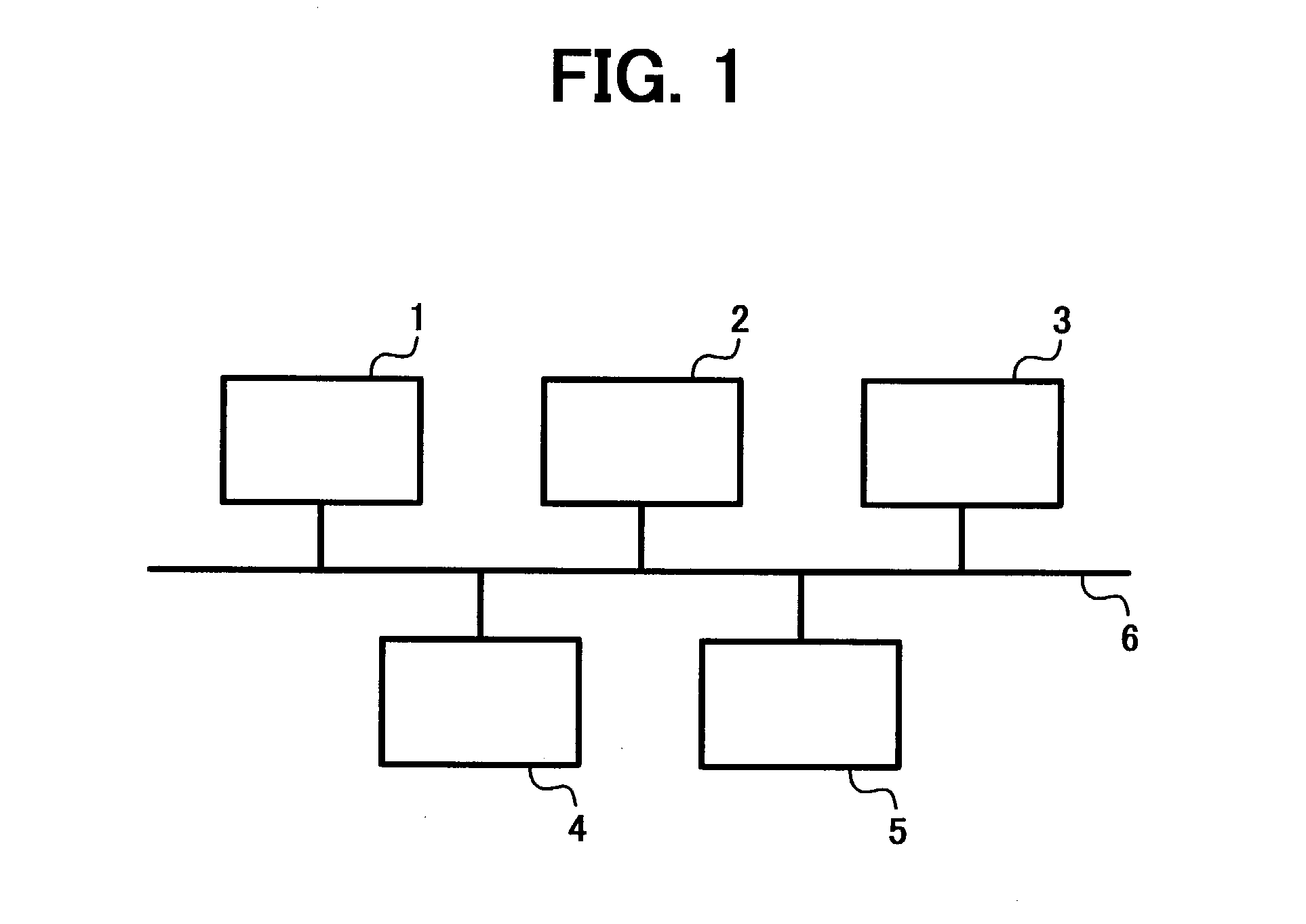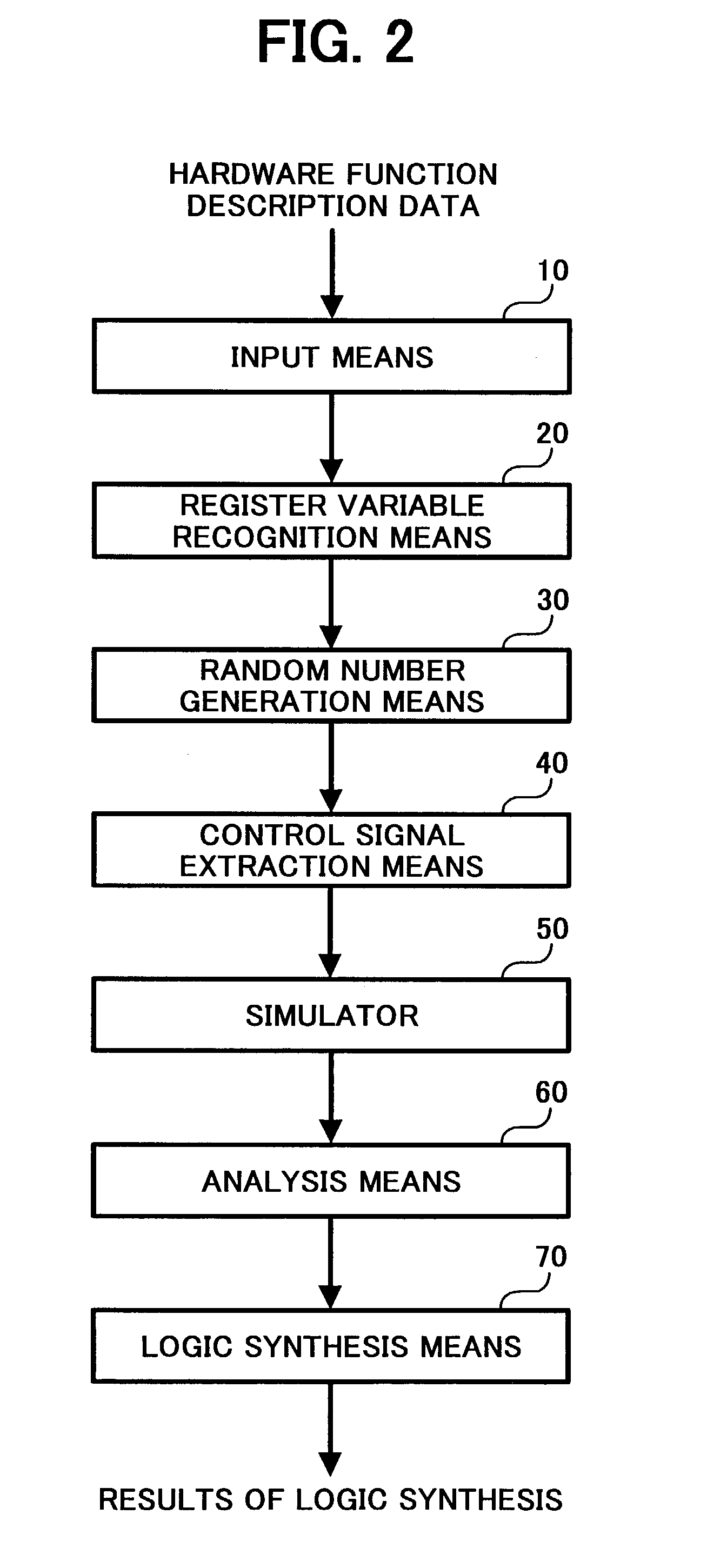System and method of design for testability
a technology of testability and system, applied in the direction of error detection/correction, cad circuit design, instruments, etc., can solve the problems of hardware function description degrade, controllability and observability analysis is relatively difficult to achieve, hardware function description timing characteristics may degrad
- Summary
- Abstract
- Description
- Claims
- Application Information
AI Technical Summary
Benefits of technology
Problems solved by technology
Method used
Image
Examples
example 1
[0097]FIG. 2 is a block diagram illustrating the functional structure of the system for implementing design for testability (DFT system) according to one embodiment disclosed herein.
[0098]Referring to FIG. 2, the functional structure includes an input means 10, register variable recognition means 20, random number generation means 30, control signal extraction means 40, simulator 50, analysis means 60, and logic synthesis means 70.
[0099]The input means 10 is adapted to read the hardware function description independent of architecture by input unit 1 to be stored temporarily in the storage unit 5 for use in the following process.
[0100]The hardware function description independent of architecture is herein made in terms of the description language such as, for example, VHDL (very high speed IC (VHSIC) hardware description language (HDL)) and Verilog-HDL, which are standardized by IEEE.
[0101]The input means 10 may alternatively be adapted to read out the hardware function description ...
example 2
[0139]FIG. 9 is a block diagram illustrating the functional structure of a further DFT system according to another embodiment disclosed herein.
[0140]Referring to FIG. 9, the functional structure of Example 2 includes an input means 10, register variable recognition means 20, random number generation means 30, control signal extraction means 40, simulator 50, analysis means 60, and function description data generation means 80.
[0141]Like reference numerals in FIG. 9 designate the components each having the same or corresponding function of those in FIG. 2 (Example 1), in which the description on these components is herein abbreviated. The description on other components is included as follows.
[0142]The function description data generation means 80 functions to generate function description data with test points inserted with respect to the control signals having low toggle rates among the control signals extracted from the control signal extraction means 40.
[0143]For example, functio...
example 3
[0146]FIG. 10 is a block diagram illustrating the functional structure of a DFT system according to still another embodiment disclosed herein.
[0147]Referring to FIG. 10, the functional structure of Example 3 includes an input means 10, register variable recognition means 20, random number generation means 30, control signal extraction means 40, simulator 50, analysis means 60, and test point insertion means 90.
[0148]Like reference numerals in FIG. 10 designate the components each having the same or corresponding function of those in FIG. 2 (Example 1), in which the description on these components is herein abbreviated. The description on other components is included as follows.
[0149]The test point insertion means 90 instructs to read the results obtained by logic synthesis of the function description data input by the input means 10, and, based on logical interconnection information included in the thus read logic synthesis results, to insert test points corresponding to the control...
PUM
 Login to View More
Login to View More Abstract
Description
Claims
Application Information
 Login to View More
Login to View More - R&D
- Intellectual Property
- Life Sciences
- Materials
- Tech Scout
- Unparalleled Data Quality
- Higher Quality Content
- 60% Fewer Hallucinations
Browse by: Latest US Patents, China's latest patents, Technical Efficacy Thesaurus, Application Domain, Technology Topic, Popular Technical Reports.
© 2025 PatSnap. All rights reserved.Legal|Privacy policy|Modern Slavery Act Transparency Statement|Sitemap|About US| Contact US: help@patsnap.com



